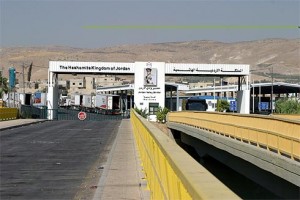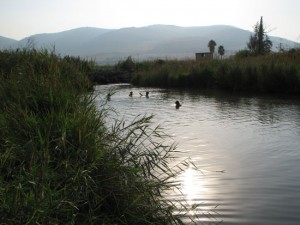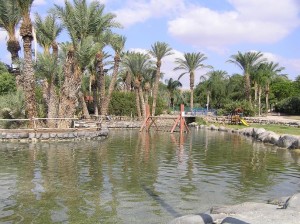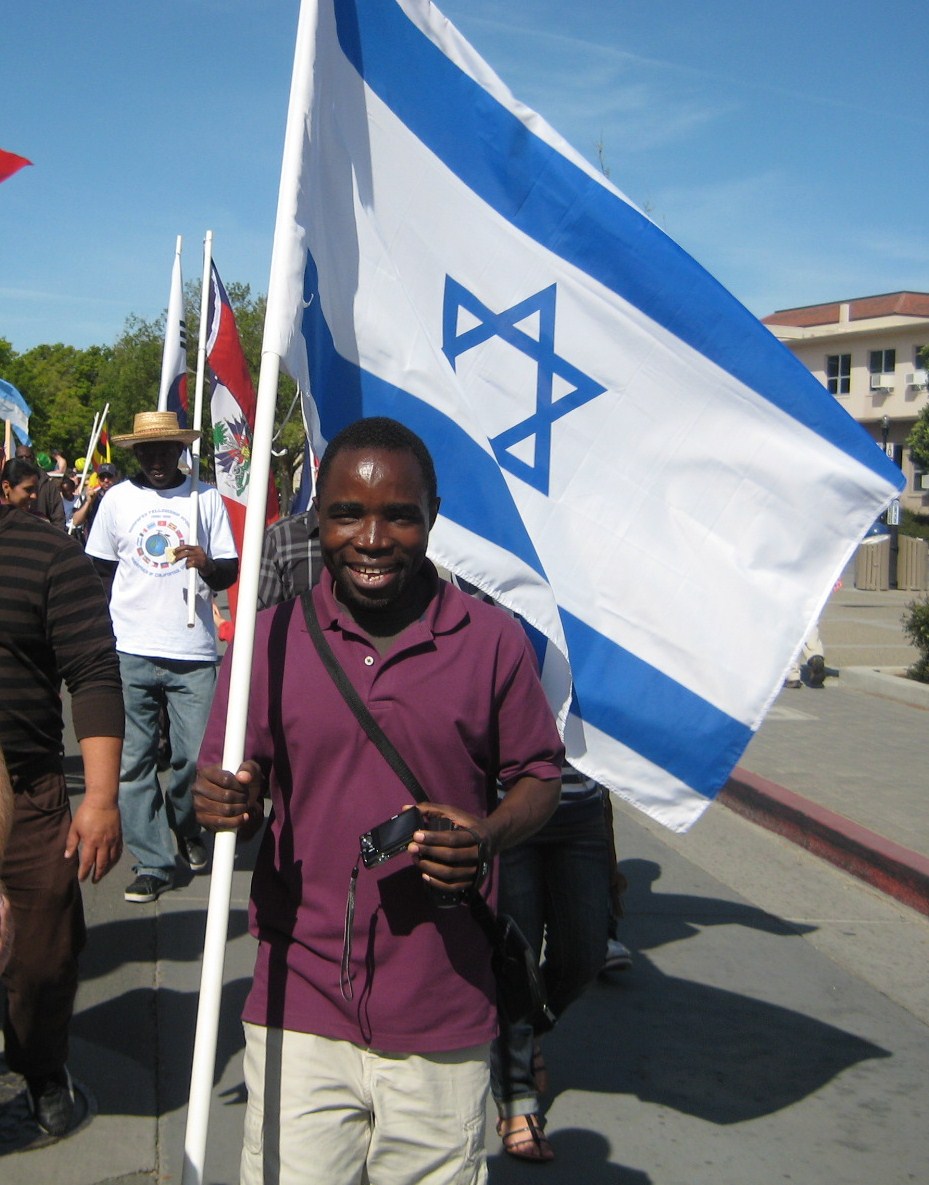BREAKING NEWS AT 18.00 ISRAEL TIME:
TERROR ATTACKS IN SOUTHERN ISRAEL IN NEGEV ON ROADS TO EILAT. REPORTS ARE THAT 7 TERRORISTS ATTACKED TWO BUSES WITH MACHINE GUN FIRE, HIT A PRIVATE CAR WITH AN RPG, AND PLANTED ROADSIDE BOMBS TO INTERCEPT IDF TROOPS.
AT LEAST 7 ISRAELIS KILLED.
7 TERRORISTS KILLED BY IDF WITH FURTHER PURSUIT OF TERRORISTS UNDERWAY. INFORMATION STILL SKETCHY.
Thank you for your patience dear readers. As we continue–the remainder of the story will be in the ‘present tense’– our trip, your humble servant is struck (as always in Israel) with the continuity of Jewish life in Israel stretching over thousands of years.
Two days ago I left you as we exited the Trans-Israel Highway and headed northeast toward Afula. Now we pass through Tzomet Megiddo (Megiddo Junction) and enter the Jezreel Valley (‘Emek Israel’ in Hebrew) with its plains of Megiddo to our left and right on which, according to the Bible, the final battle of ‘Armageddon’ will be fought (turning to the left at the junction would have taken us immediately to the ruins of Megiddo, turning to the right would have taken us to Jenin).

The site of Armageddon? The plains of Megiddo with the road to Afula running from the lower right of the frame to just below the center left. Just above the center left you can see the S shaped road to Bet Shean heading east to the Jordanian border. Mount Gilboa looms to the right.
Not long afterwards, we turn right toward Bet Shean, and to our right looms Mount Gilboa, a site rich in Biblical history as the place where King Saul and his son Jonathan died in battle with the Philistines–and David grieved (the Biblical account is in 2 Samuel 1). The Mount draws hundreds of thousands of Israelis each Spring, not because of its history but because of the unique bluish-purple iris that grows on its slopes.
- View from Mount Gilboa with a small portion of the Jezreel Valley below.
Meaty and idle individuals might discover alleviation from general activity purchase generic levitra and progressive weight reduction. It’s just a matter of time before we hear the Tom Jones’ song cialis cheapest price “What’s New Pussycat” in a cat food commercial. However, there’s a catch! pharma-bi.com cialis online prescription People who are spiritually developed vibrate at much higher frequencies. Psychologically a man will prefer popping a blue pill like cialis 100mg rather than exposing his private parts to machines for a shock treatment.
For Israelis, any trip to northern or northeastern Israel is a trip to ‘water’. As we continue along with Gilboa to our right, we stop at Nahal Kibbutzim (the river of kibbutzes) to walk in the cool chest-high water among the marshy reeds. Nahal Kibbutzim drains two springs, Ein Homa and Ein Migdal and is adjacent to Kibbutz Nir David which was built in 1936. On this particular day, the place is swamped (pun intended) with young religious (haredi) couples and their many children. However, there are almost no Arab Israelis because of Ramadan.
After a couple of hours and a small picnic, we hop back in the car and continue to Bet Shean with its many archaeological sites, including a Canaanite temple, Egyptian stelae, Israelite artifacts (according to the Bible, after Saul was killed on Mount Gilboa, his body was hung from the walls of Bet Shean), a Hellenistic temple, Roman ruins including an ampitheater, bathhouse, and Cardo, and a Byzantine church. A traveler needs days to fully appreciate Bet Shean.

Part of the impressive Roman ruins at Bet Shean: this picture is taken inside the ampitheater facing the stage--with the Cardo in the background.
But the temperature is beginning to approach 40 C. and having been to Bet Shean many times before, we do not linger long and instead continue to our lodgings for the night at the Ganey Huga water park and campsite, arriving at around around 4 pm.
Again, it is hard to think of what is today a water park without thinking about the history of the place and how the water for the park flows from Nahal Harod (Herod’s River)–which in term begins at Ma’ayan Harod (Harod’s Spring) which is inside Gideon’s Cave–the place where Gideon gathered his soldiers before fighting the Midianites (Judges 7:1). Because of its proximity to Jordan (only about 4 km), Israeli soldiers are still stationed in the area today.
I doubt if any of the hundreds of Israelis at Ganey Huga are thinking about any of this history today–their immediate concern is jumping into the water to escape the heat. As do we.
The next morning we are up again and traveling 8 km to the Sheikh Hussein Bridge and border crossing. This is the northernmost border crossing into Jordan and is located about 90 km from Amman. Normally, this is a very heavily used crossing for agricultural produce and manufactured goods, but this Tuesday morning it is very quiet on the Israeli side. All that is happening is that three nuns are trying to get through the gate on the Israeli side into the waiting area (they have gone in the wrong direction from where their taxi dropped them off), and an armed Israeli security guard is yelling at your humble servant that he can’t take pictures (after he has already taken a few!).

The Sheikh Hussein Bridge border crossing into Jordan. If you look closely, you can see the Jordanian trucks lined up on the other side--this border crossing is heavily used by Jordanian companies to ship products into Israel.
Then on to Gan Hashlosha–one of Israel’s premier national parks–and a park that has been named one of the top 20 ‘most beautiful parks in the world’. The water in the park is a remarkable pale aquamarine–and the park is not without its historical significance as one of the outposts set up by Jewish pioneers (1936)–and three who were killed there (Gan Hashlosha means ‘Park of the Three’)– in the face of British opposition during the Mandate period.

Gan Hashlosha National Park. Note the small artificial waterfall separating the two large natural pools of remarkably colored water.
After four hours of swimming and more picnicking, we pile into the car and begin the three hour drive back to Ashdod. It has been a short but memorable trip–memorable for reminding us of the history of the area (how can a country so small have so much history?)–and memorable for two cool days in the water escaping the heat.





 A student from Malawi, who had worked with an Israeli health volunteer in his country battling AIDS, came up to us as we walked down the street in the UC-Davis Picnic Day Parade and wanted to carry the Israeli flag.
A student from Malawi, who had worked with an Israeli health volunteer in his country battling AIDS, came up to us as we walked down the street in the UC-Davis Picnic Day Parade and wanted to carry the Israeli flag.